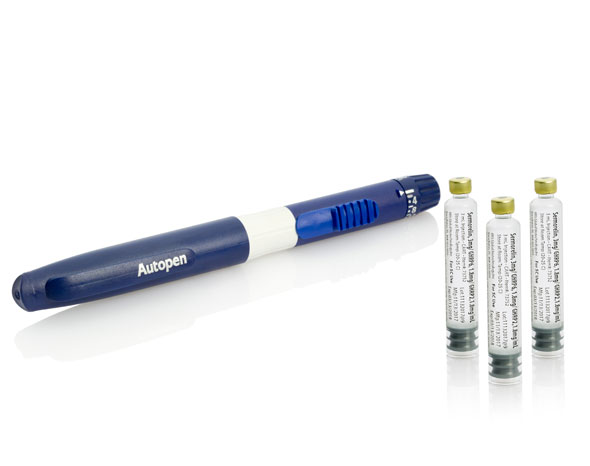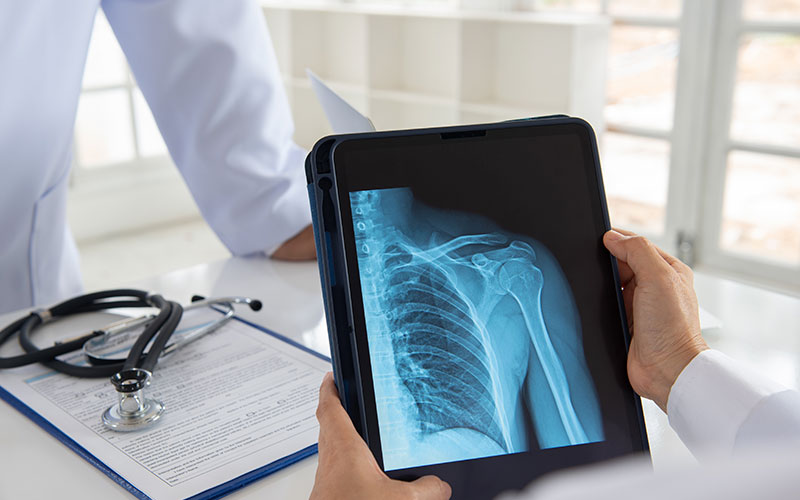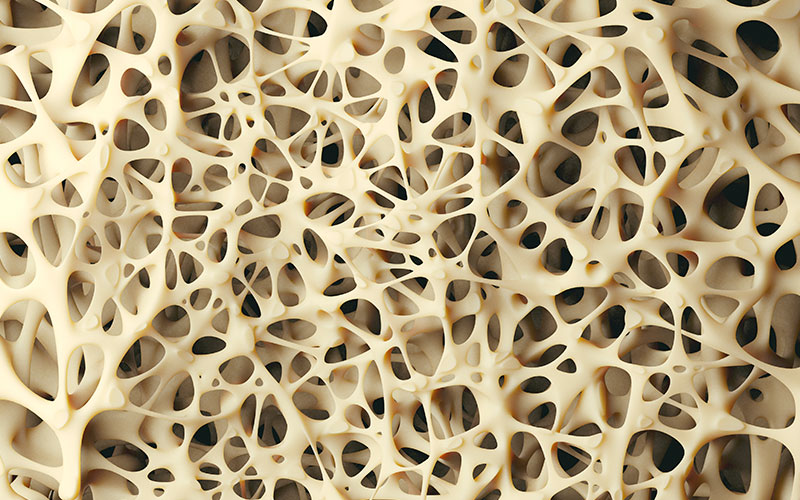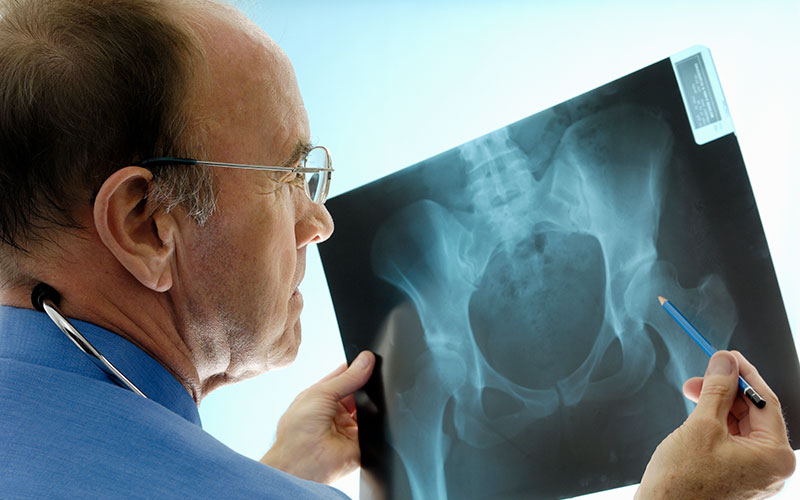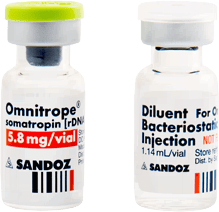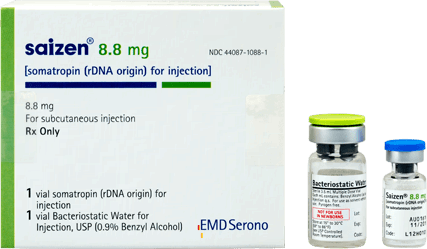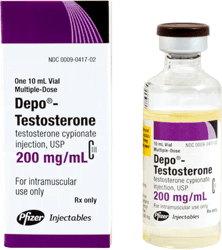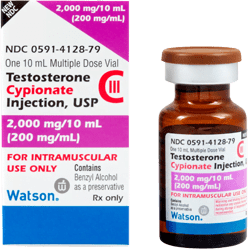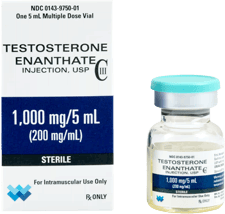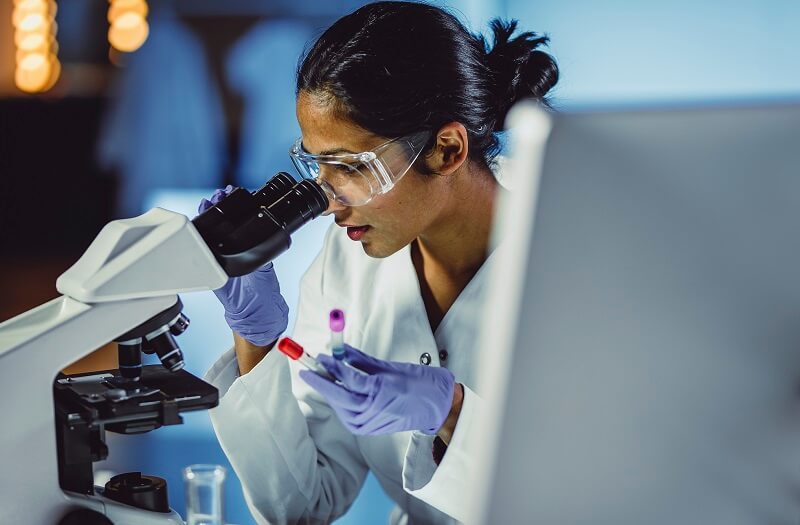- Home
- Growth Hormone
- Growth Hormone
- Growth Hormone Deficiency
- Growth Hormone Therapy
- Growth Hormone Injections
get startedThe Most Effective Hormone Replacement TherapiesHuman Growth Hormone and the Treatment of Osteoporosis
Clinical research has shown that human growth hormone (HGH) can improve bone health and reduce the risk of osteoporosis and osteoporosis-related fractures.
Human growth hormone or HGH is largely responsible for the regeneration of every cell in the body, including bone. When it comes to bone health and bone density – which is a measure of the strength of your bones – each day, some of your bone cells go through a remodeling phase, where old cells die off and get resorbed into the body.
New cells are necessary to take their place. As we age, this process slows, leading to a decrease in bone density. This weakening of the bones is why the elderly are at greater risk of the development of osteoporosis and osteoporosis-related fractures.
HGH has been scientifically proven to be able to prevent and treat osteoporosis.
What is Osteoporosis?
Osteoporosis is a degenerative bone disease. Osteoporosis is more common in women, but it affects nearly 200 million people all around the world, both men and women. Osteoporosis is the cause of the weakening of bones that leads to fractures that are common among the elderly. Osteoporosis also makes these fractures difficult to heal, so osteoporosis fractures can be severely disabling to older people.
What Are the Symptoms of Osteoporosis?
There typically are no symptoms in the early stages of bone loss. But once your bones have been weakened by osteoporosis, you might have signs and symptoms that include:
- Back pain, caused by a fractured or collapsed vertebra
- Loss of height over time
- A stooped posture
- A bone that breaks much more easily than expected
What are the Causes of Osteoporosis?
Osteoporosis means “porous bone." All bones have "holes" in them. When you look under a microscope, bone tissue looks like a honeycomb. In a person with osteoporosis, the holes and spaces in the honeycomb are much larger than in healthy bone. This is what makes bones less dense, weak, and subject to fracture.
Your bones are not hard and static as you may think. They are in a constant of “remodeling” throughout your life, with old bone dying and new bone being replaced. Human growth hormone is instrumental to this process. As we age, HGH levels drop, and old bone is no longer replaced as well as it was when we were younger, which results in bone mass being lost much faster than it’s created.
This leads to the weakening of bones typical of osteoporosis. Osteoporosis affects men and women of all races. But white and Asian women — especially older women who are past menopause — are at the highest risk of developing osteoporosis.
Several lifestyle issues such as smoking, not getting enough exercise, not getting enough vitamin D in your diet, and certain disease conditions can also increase your risk for developing osteoporosis.
How is Osteoporosis Treated?
Treatment recommendations are often based on an estimate of your risk of breaking a bone in the next ten years using information such as the bone density test.
The most commonly prescribed medication for both men and women at increased risk of fracture is a class of drugs known as bisphosphonates. If your risk of fractures isn’t high, treatment may not include medication and might instead focus on making lifestyle changes that can reduce your risk factors for bone loss and falls.
In addition to prescription medications, hormone replacement therapies, particularly growth hormone therapy and testosterone therapy, have been shown to be quite effective in treating or preventing osteoporosis.
Regulation of Bone Mass by Growth Hormone
Human growth hormone is the primary stimulator of cellular regeneration throughout the body. Once HGH enters the bloodstream, it carries out a multitude of functions – one of which is telling the liver to secrete insulin growth factor 1 (IGF-1). IGF-1 regulates many HGH actions, including cellular reproduction.
As you age, your pituitary gland decreases HGH secretion, and along with it, the secretion of IGF-1. The combined decrease in HGH levels and IGF-1 levels lead to fewer new cells being generated to replace damaged and dead cells. The result is many of the degenerative conditions we think of as “aging,” such as thinning hair, wrinkled skin, and more fragile bones.
HGH therapy can reverse many of these problems. In particular, it can improve bone density and help to prevent osteoporosis.
Can Growth Hormone Reduce the Risk of Osteoporosis?
Osteoporosis is a degenerative bone disease. Osteoporosis is more common in women, but it affects nearly 200 million people of both genders worldwide. Osteoporosis is the cause of the weakening of bones that leads to fractures common among the elderly. Osteoporosis also makes these fractures challenging to heal, so osteoporosis fractures can be severely disabling to older people.
Human growth hormone, or HGH, has been scientifically proven to help prevent and treat osteoporosis. A landmark study published in 2015 in the Endocrine Society’s Journal of Clinical Endocrinology & Metabolism found that for many years after it was given, HGH continued to reduce the risk of fractures and helped maintain bone density in postmenopausal women who had osteoporosis.
Since then, a recent literature review and meta-analysis indicated that growth hormone replacement therapy reduces the risk for fracture in all patients with osteoporosis, men, and women. The researchers concluded that HGH can enhance bone mass and can protect against osteoporosis fractures "quite efficiently."
Studies have proven that HGH can strengthen bones and prevent fractures typical of osteoporosis.
Does Growth Hormone Reduce the Risk of Osteoporosis Fractures?
The greatest risk to people with osteoporosis is bone fractures. Fractures are common in people with osteoporosis because it usually occurs around the same time that people start to experience balance, weakness, and other issues that can cause falls. Fractures are also harder to heal in older people, making osteoporosis fractures particularly dangerous.
Many published studies have proven that HGH therapy can reduce or prevent osteoporosis fractures in older people.
Postmenopausal women are most at risk of developing osteoporosis. HGH therapy has proven to be particularly useful in preventing fractures in this group of patients.
What Does the Research Have to Say About HGH and the Risk of Osteoporosis?
Studies around the world are reporting the benefits of HGH for osteoporosis and bone health.
A recent study published in the Journal of Clinical Endocrinology & Metabolism proved that the HGH helps to reduce the risk of fractures and maintain the bone mass within healthy levels among postmenopausal women who have been diagnosed with osteoporosis.
Furthermore, that study indicated the results of HGH treatment for osteoporosis were long-lasting, concluding, "A decade after the study began, the women who received the larger growth hormone dose still had higher bone mineral density levels than the participants who received the lower dose or the placebo.”
A 2018 study concluded, “Patients who received HGH had a significant decrease in fracture risk as compared to control.”
Earlier studies said that “Treatment of osteoporosis with HGH is found to be beneficial due to the increased bone metabolism and improved bone geometry which occurs with HGH.” Another study in that same year in 1998 concluded that “GH treatment for more than 18 months gives increased bone formation and bone mineralization of newly produced bone and a concomitant increase in bone mass as determined with DEXA. Thus, the action of GH on bone metabolism in GHD adults is 2-fold: it stimulates both bone resorption and bone formation.”
Another study in 2000 discovered that “HGH increases bone formation both via direct interaction with growth hormone receptors on osteoblasts and via locally produced IGF-I HGH deficiency results in decreased bone mass in both man and laboratory animals and treatment of growth hormone deficient patients with HGH for several months results in increased bone mass. HGH treatment also increases bone mass and the total mechanical strength of bones in rats with normal HGH secretion.”
Soon after, in 2002, a study on HGH and bone density concluded by saying, "In conclusion, this study showed that HGH treatment of men with idiopathic osteoporosis continuously, as well as intermittently, in combination with calcium and vitamin D3 for two years resulted in an increase in BMD (bone mineral density) in the lumbar spine and total body and an increase in total body BMC (bone mineral content), which was sustained, and possibly also increased further, for at least one year post-treatment.
Then again, in 2017, a "meta-analysis" (a study of studies) published in the journal Rheumatology Advisor concluded that “A recent literature review and meta-analysis indicates that growth hormone therapy can reduce the risk for fracture in patients with osteoporosis.”
Growth hormone therapy can help treat and reduce the risk of osteoporosis fractures in older adults.
Now that you know a bit more about how HGH can help patients with osteoporosis, why not contact us today, and find out more about the many life-changing benefits of HGH and other hormone replacement therapies.
- Growth Hormone Therapy






